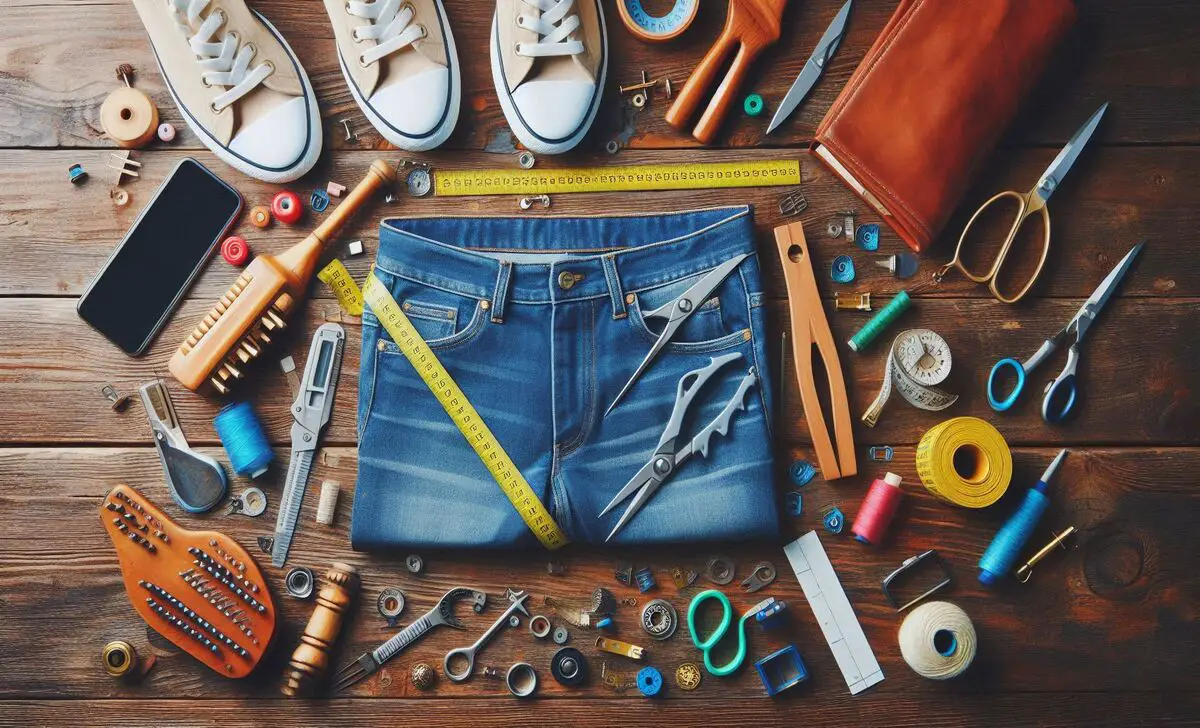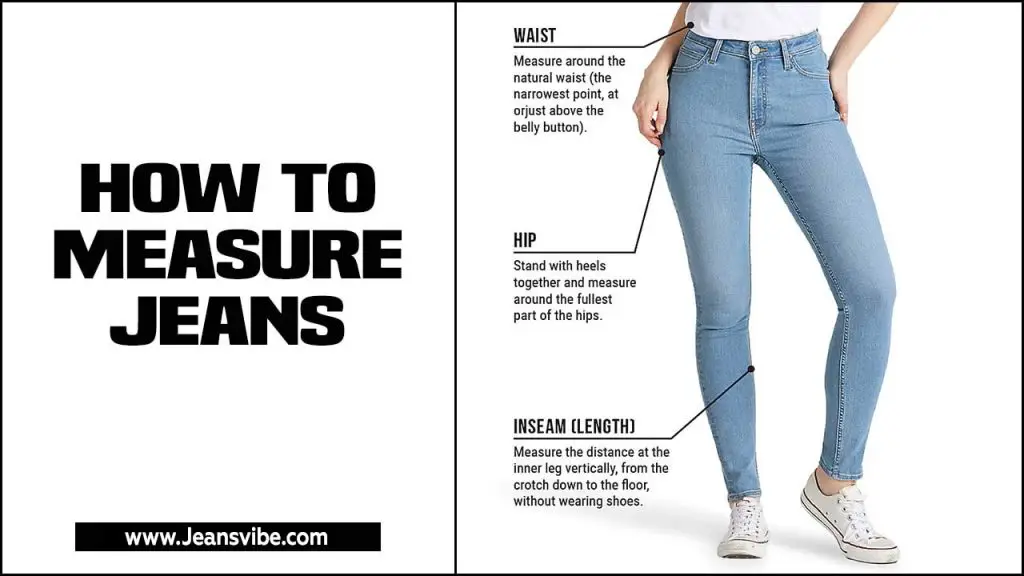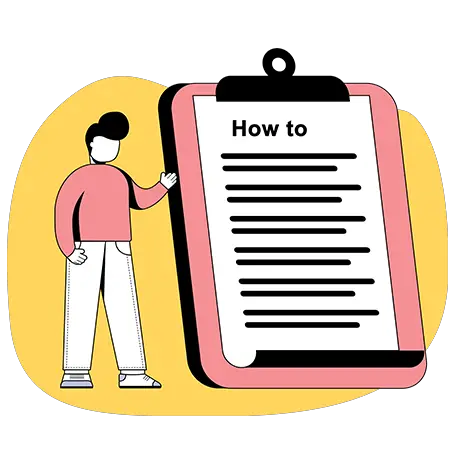Finding the perfect fit for jeans can be a game-changer in achieving a flattering and comfortable look. But before you can confidently choose your next pair, it’s essential to understand how to measure jeans accurately.
Whether you’re shopping for new jeans online or assessing your current collection, knowing the key measurements can help ensure a great fit. In this guide, we’ll walk you through the fundamental aspects of measuring jeans, from waist and inseam to rise and leg opening, so you can make informed decisions and enjoy the perfect pair every time.

Ways To Measure Jeans For The Perfect Fit

Getting the perfect fit for jeans can be challenging, but measuring them properly can make all the difference. By taking accurate measurements of your jeans, you can ensure that you find a pair that fits you perfectly and flatters your body shape. Here are some steps to help you measure your jeans for the perfect fit. The right tools are essential to ensure you get the perfect fit when measuring your jeans. Here are the key items you’ll need:
Measuring tape>Notebook and pen>Existing pair of well-fitting jeans
Key Measurements
Waist
Measuring your waist accurately is crucial for finding jeans that fit well. The waist measurement is taken around the narrowest part of your torso, typically just above the belly button and below the ribcage. To measure your waist, wrap a flexible measuring tape around this part of your torso, ensuring it is level all the way around and not too tight or loose.
For accurate measurement, stand up straight, relax your stomach, and avoid holding your breath. It’s also helpful to measure over bare skin or a thin layer of clothing to avoid adding extra inches. Double-check your measurement by repeating the process several times to ensure consistency.
Hips
Measuring your hips correctly ensures that your jeans fit comfortably and flatter your figure. Hips refer to the fullest part of your lower body, typically around the buttocks and the widest part of the hips. To measure your hips accurately, stand with your feet together and wrap the measuring tape around the fullest part of your hips, usually 7-9 inches below your natural waistline. Ensure the tape is level and parallel to the floor for an accurate reading.
Inseam
The inseam is a crucial measurement for ensuring your jeans fit perfectly, as it determines the length of the jeans from the crotch to the hem. To measure your inseam, stand straight with your legs slightly apart and ask someone to help you. Place the measuring tape at the crotch seam and extend it down the inside of your leg to the bottom of your ankle.
Make sure the tape is snug but not too tight. For accuracy, it’s helpful to measure a pair of jeans that fit you well, laying them flat on a surface and measuring from the crotch seam to the hem. Repeat the measurement a few times to ensure consistency.
Outseam
The outseam is the measurement from the top of the waistband to the bottom of the pant leg along the outer edge. This crucial measurement determines the overall length of the jeans and ensures they fit properly from the waist to the ankle.
How To Measure Your Outseam

- Positioning: Stand up straight on a flat surface.
- Starting Point: Place the measuring tape’s end at the waistband’s top, right at the side seam.
- Measuring: Extend the tape down along the outer side of your leg to the bottom of the ankle or the desired length.
Rise
When measuring jeans for the perfect fit, the rise is crucial to determining where the jeans sit on your waist and how comfortable they feel. The rise is the distance from the crotch seam to the top of the waistband. There are three main types of rises to consider:
- High-Rise: Sits above the natural waistline, providing a vintage look and often elongating the legs.
- Mid-Rise: Sits at or just below the natural waistline, balancing comfort and style.
- Low-Rise: Sits well below the natural waistline, typically resting on the hips for a more relaxed, casual appearance.
How To Measure The Rise:
- Lay the jeans flat on a surface.
- Measure from the crotch seam straight up to the top of the waistband.
- Ensure the jeans are completely flat to avoid any fabric bunching.
- Use a flexible measuring tape for better accuracy.
- Measure multiple times to confirm consistency.
- If possible, measure a pair of jeans that you already find comfortable for comparison.
Thigh
The thigh measurement is crucial for determining comfort and mobility in jeans. Defined as the circumference of the thigh at its fullest point, typically located a few inches below the crotch, this measurement ensures the jeans fit comfortably without being too tight or loose. To measure your thigh accurately, wrap a measuring tape around the fullest part of one thigh while standing upright with your legs slightly apart. Ensure the tape is parallel to the ground and snug against your skin, but not so tight that it compresses the flesh.
Leg Opening
The leg opening refers to the circumference of the bottom hem of the jeans. To measure the leg opening accurately, lay the jeans flat on a smooth surface. Smooth out any wrinkles and ensure the legs are straight and aligned. Using a measuring tape, place one end at the bottom of one leg seam and measure straight across to the bottom of the opposite leg seam.
Measuring Existing Jeans

When measuring an existing pair of well-fitting jeans to ensure the perfect fit for new ones, start by laying them flat on a smooth surface. Use a measuring tape to record the following key measurements:
- Waist: Measure from one side of the waistband to the other, ensuring the jeans are buttoned or zipped up.
- Hips: Measure from the base of the zipper or button across the widest part of the hips.
- Inseam: Measure from the crotch seam to the bottom of the leg hem.
- Outseam: Measure from the top of the waistband to the bottom of the leg hem.
- Rise: Measure from the crotch seam to the top of the waistband at the front and back.
- Thigh: Measure across the thigh, typically 1 inch (2.5 cm) below the crotch seam.
- Leg Opening: Measure across the bottom hem of the leg.
Comparing New Measurements To Existing Jeans:
Once you have the measurements of your well-fitting jeans recorded, compare them to the size chart or measurements of the new jeans you’re considering. Look for discrepancies and adjust accordingly based on the fit you prefer—whether it’s a snug fit, relaxed fit, or tailored fit. This comparison will help you ensure the new pair fits as comfortably and stylishly as your favorite pair.
Tips For Accurate Measurement
- Wear Shoes: If you plan to wear jeans with specific shoes, measure them while wearing them to ensure they are the correct length.
- Straight Posture: Keep your leg straight and stand upright to avoid bending or slouching that could affect the measurement.
- Helper: If possible, have someone assist you to ensure the tape stays straight and flat against your body.
- Check Fit: Compare the outseam measurement with your current pair of well-fitting jeans to ensure consistency.
Common Mistakes To Avoid
When measuring jeans for the perfect fit, it’s crucial to avoid common mistakes leading to inaccurate sizing. Firstly, always measure directly on your body without clothes to ensure precision; measuring over clothes can distort measurements, leading to an ill-fitting pair. Secondly, keep the measuring tape level and snug but not tight against your body to get the most accurate readings. Ignoring the importance of accurate measurements can result in either too loose or uncomfortably tight jeans.
- Measure directly on your body, not over clothes.
- Keep the measuring tape level and snug.
- Ensure accuracy for both comfort and fit.
Flatter Your Body Shape By Measuring Perfect Fit

Measuring jeans is crucial for achieving the perfect fit. Unlike other clothing items, jeans rely heavily on accurate measurements to ensure they flatter your body shape and provide optimal comfort. Taking waist circumference, hip width, inseam length, and rise measurements will help you find the right size and style that suits your unique body proportions.
By measuring your jeans before purchasing or altering them, you can avoid the hassle of returns or ill-fitting denim that fails to emphasize your best features. A well-fitted pair of jeans enhances your confidence and elevates your overall style. So, grab a tape measure and get ready to find the perfect pair of jeans to make you look and feel amazing.
Conclusion
Taking accurate measurements is crucial to finding the perfect-fitting jeans. You can ensure a comfortable and flattering fit by understanding the importance of measuring jeans and using the right tools. Remember to measure the inseam length, rise, and leg openings to find the right size for your body shape and style preferences.
Remember to troubleshoot any fit issues and make adjustments as needed. With these tips in mind, you’ll be able to confidently shop for jeans that look and feel great. We hope you know how to measure jeans. So go ahead and measure those jeans with confidence.
Frequently Asked Questions
1.What Size Is 32 In Jeans?
Size 32 in jeans typically refers to a waist measurement of 32 inches. However, remember that different brands may have slight variations in sizing standards. Always consult the specific brand’s size chart and take accurate measurements before purchasing to ensure the perfect fit.
2.How Do I Measure My Jeans Size?
Ans: To determine your jeans size, grab a measuring tape. Wrap it around your waistline at the narrowest point to measure the waist. Measure from the crotch to the hem of the jeans for the inseam. Then, refer to a size chart to find your correct jeans size based on your measurements.
3.What Is The Best Fit For Jeans?
The best fit for jeans varies based on individual body shape and style. Popular options include skinny, straight, bootcut, and relaxed fits. Pay attention to the waistband, thigh, and length for a proper fit when trying on jeans.
4.How Do You Know What Size Of Jeans To Buy?
To determine the right size of jeans, measure your waist and inseam. Then, check the brand’s sizing chart and compare it with your measurements. If unsure, try on different sizes, as they can vary between brands. When selecting a size, consider the desired fit, such as slim or relaxed.
5.What Tools Are Necessary For Measuring Jeans Accurately?
To measure jeans accurately, you’ll need flexible measuring tape and a flat surface like a table or countertop. Use a pant leg with a straight seam to get precise inseam measurements. Having someone assist you can also ensure accurate results.



